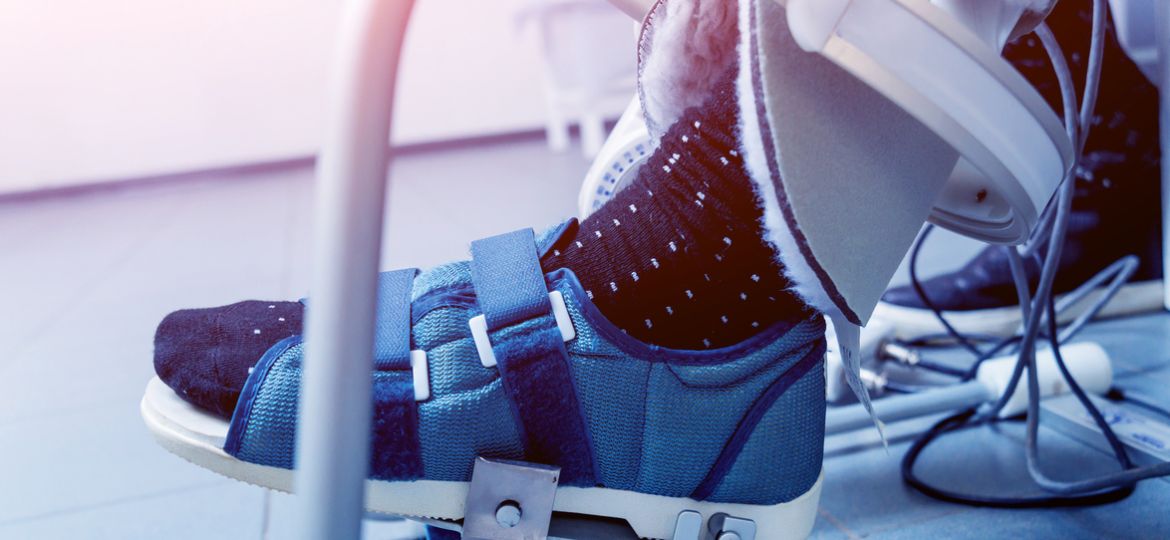
Continuous Passive Motion (CPM) machines are rehabilitation devices often prescribed for injured employees recovering from certain types of surgeries or injuries. While these devices have gained prominence in recent years as a tool for post-operative care and injury rehabilitation, their effectiveness remains a subject of debate among medical professionals. In this post, we’ll explore what CPM machines are, their various types, uses, benefits, and potential drawbacks in workers’ compensation cases.
What are CPM Machines?
CPM machines are motorized devices designed to move a joint through a controlled range of motion without the patient’s active effort. The primary goal is to reduce joint stiffness, improve circulation, and promote healing after surgery or injury.
Types of CPM Machines:
- Knee CPM: The most common type, used after knee surgeries such as total knee replacement or ACL reconstruction.
- Shoulder CPM: Used for recovery from rotator cuff repairs, shoulder replacements, or frozen shoulder treatment.
- Elbow CPM: Helpful after elbow surgeries or to treat stiff elbow conditions.
- Ankle CPM: Used for ankle surgeries or to improve range of motion in ankle injuries.
- Hip CPM: Less common but used in some cases after hip surgeries or injuries.
Common Uses in Workers’ Compensation:
CPM machines are typically prescribed for workers recovering from:
- Joint replacement surgeries (especially knee and shoulder)
- Ligament or tendon repairs
- Cartilage injuries
- Severe fractures near joints
- Post-surgical management of workplace injuries affecting joints
Duration of Use:
The length of CPM use varies depending on the specific injury and the physician’s protocol. Typically:
- Immediate post-operative period: 1-2 weeks of continuous use (up to 20 hours per day)
- Extended recovery: 4-6 weeks of less frequent use (2-3 hours, 2-3 times daily)
- Some cases may require longer periods of use
Pros of CPM Machines:
While the efficacy of CPM machines is debated, proponents cite several potential benefits:
- Reduces joint stiffness and improves range of motion
- Decreases post-operative pain and swelling
- Promotes faster healing and recovery
- May reduce the risk of blood clots
- Can be used at home, reducing the need for frequent clinic visits
Cons and Considerations:
Despite the potential advantages, there are important drawbacks and factors to consider when using CPM machines:
- Space requirements: Some devices are bulky and require dedicated space
- Compliance issues: Some injured employees may find it challenging to use as prescribed
- Not suitable for all injuries or surgeries
- Some newer research suggests CPM machines are not effective for most patients, offering limited benefits with inconsistent results and potentially increasing costs and the risk of complications
Best Practices for Workers’ Compensation Claims:
- Physician Approval: Ensure the treating physician specifically prescribes and approves CPM use.
- Clear Guidelines: Establish clear protocols for duration and frequency of use.
- Injured Employee Education: Provide thorough instructions to the injured worker on proper use and expectations.
- Regular Monitoring: Schedule check-ins to assess progress and compliance.
- Combine with Active Therapy: CPM should complement, not replace, active physical therapy.
- Cost-Benefit Analysis: Weigh the potential benefits against the costs, especially for longer-term use.
Conclusion:
CPM machines can be valuable tools in the recovery process for certain workplace injuries, particularly those involving joint surgeries. However, their use should be carefully considered on a case-by-case basis. Claims professionals should work closely with medical providers to ensure that when CPM machines are prescribed, they are used appropriately and effectively to promote optimal recovery and return-to-work outcomes for injured workers.
By understanding the types, benefits, and considerations of CPM machines, claims professionals can better manage these aspects of workers’ compensation cases, potentially leading to improved recovery times and better overall outcomes for injured employees.
